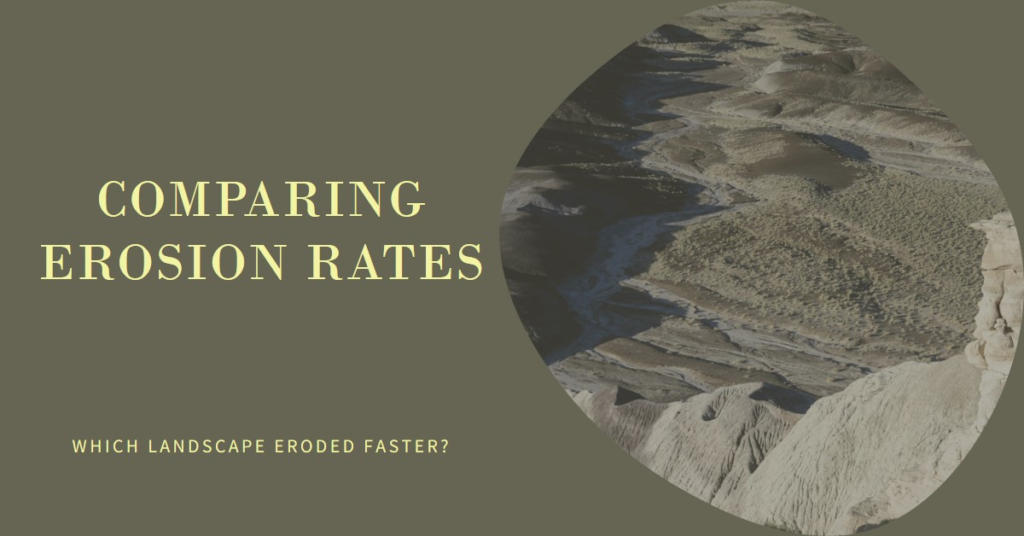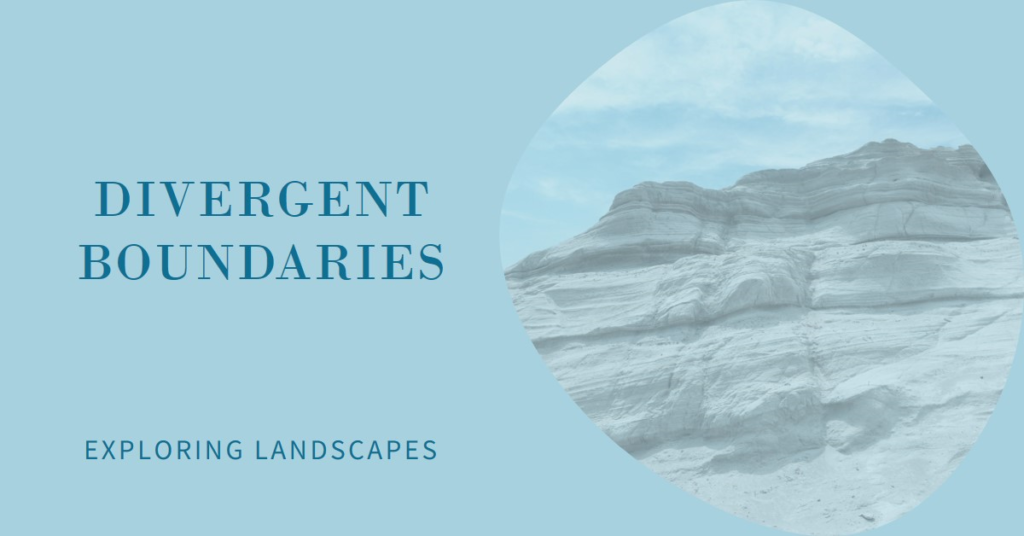
Table of Contents
- Introduction: Unveiling Nature’s Sculptors
- The Agents of Erosion: Wind, Water, Ice, and Gravity
- The Role of Climate: Erosion’s Tempo Setter
- Human Influence: Accelerating Erosion
- Mountainous Terrains: The Erosion Hotspots
- Coastal Landscapes: Battling the Elements
- River Valleys: Nature’s Carving Tools
- Desert Landscapes: Wind’s Masterpieces
- Forested Areas: Nature’s Erosion Control
- The Comparative Analysis: Insights from Case Studies
- Conclusion: Lessons from Erosion’s Storytellers
Introduction: Unveiling Nature’s Sculptors
Landscapes tell stories etched in rock, soil, and sediment, revealing the relentless forces that shape our world. Erosion, the process that wears away the Earth’s surface, is a principal storyteller. By comparing different landscapes, we can uncover the varying rates at which they erode and the factors driving these differences. This blog delves into the intriguing question: which landscape eroded more quickly?
The Agents of Erosion: Wind, Water, Ice, and Gravity
Understanding erosion requires an appreciation of its primary agents: wind, water, ice, and gravity. Each agent exerts a unique influence on the Earth’s surface, sculpting landscapes in distinct ways.
Water, through rainfall, rivers, and ocean waves, is perhaps the most potent erosive force. Rainfall dislodges particles, while rivers carve valleys and canyons. Oceans batter coastlines, constantly reshaping them. Wind, although less powerful, transports sand and dust over vast distances, gradually wearing down rock surfaces. Ice, in the form of glaciers, grinds down mountains and carves deep fjords. Gravity pulls loose material downslope, causing landslides and contributing to the gradual denudation of highland areas.
The Role of Climate: Erosion’s Tempo Setter
Climate significantly influences erosion rates. In arid regions, lack of vegetation exposes soil and rock to wind erosion. Deserts, with their sparse rainfall and strong winds, experience rapid erosion despite limited water flow. Conversely, in humid regions, abundant rainfall accelerates water erosion. Tropical landscapes, characterized by heavy rain and dense vegetation, often erode quickly due to frequent runoff and river activity.
Temperature also plays a role. Freeze-thaw cycles in colder climates cause rocks to fracture and disintegrate, enhancing erosion. Glacial periods, with advancing and retreating ice sheets, have dramatically reshaped entire continents. Understanding these climatic factors helps us predict erosion patterns and rates across different landscapes.
Human Influence: Accelerating Erosion
Human activities have increasingly become significant drivers of erosion. Deforestation, mining, agriculture, and urbanization expose soil and rock surfaces, making them more susceptible to erosive forces. Roads and buildings alter natural water flow, intensifying erosion in some areas while reducing it in others.
Agricultural practices, particularly those that disturb the soil, such as plowing and overgrazing, lead to soil erosion. Without plant roots to hold the soil in place, it washes away easily during rainfall. Similarly, deforestation removes the protective cover of trees, exposing the soil to wind and water erosion. Urbanization replaces permeable surfaces with impermeable ones, increasing runoff and erosion rates downstream.
Mountainous Terrains: The Erosion Hotspots
Mountainous regions are among the fastest-eroding landscapes on Earth. The combination of steep slopes, heavy rainfall, and active geological processes makes these areas particularly prone to erosion. In the Himalayas, for instance, rapid uplift and intense monsoonal rains contribute to some of the highest erosion rates globally.
Mountains also experience significant glacial erosion. As glaciers move, they grind away the underlying rock, deepening valleys and shaping peaks. When glaciers retreat, they leave behind loose material that is easily eroded by water and wind. The interplay between tectonic uplift and erosive forces creates dynamic landscapes that change rapidly over geological timescales.
Coastal Landscapes: Battling the Elements
Coastal areas are in a constant battle with the elements. Waves, tides, and currents continually reshape shorelines, eroding cliffs, and depositing sediments elsewhere. Coastal erosion can be particularly rapid during storms, when powerful waves and surge waters remove large amounts of material in a short time.
Human activities, such as constructing sea defenses and altering natural water flows, can exacerbate coastal erosion. While sea walls and groynes protect specific areas, they can increase erosion further down the coast. Rising sea levels, driven by climate change, also pose a significant threat to coastal landscapes, accelerating erosion and altering natural habitats.


River Valleys: Nature’s Carving Tools
Rivers are nature’s carving tools, creating some of the most iconic landscapes. The Grand Canyon, formed by the Colorado River, is a testament to the power of river erosion. Over millions of years, rivers cut through rock, deepening valleys and transporting sediments downstream.
The rate of river erosion depends on several factors, including water flow, sediment load, and rock type. Fast-flowing rivers with high sediment loads erode their beds and banks more quickly. In contrast, slow-moving rivers in flatter areas erode more gradually. Human interventions, such as dam construction and river channelization, also impact erosion rates by altering natural flow patterns.
Desert Landscapes: Wind’s Masterpieces
Desert landscapes, shaped primarily by wind erosion, exhibit unique features such as dunes, deflation hollows, and rock formations. Wind carries fine particles over great distances, gradually wearing down rock surfaces and sculpting intricate landforms.
Erosion rates in deserts can be surprisingly high despite the lack of water. The combination of sparse vegetation, loose sand, and strong winds creates conditions for rapid erosion. Sandblasting, where wind-driven particles abrade rock surfaces, is particularly effective in shaping desert landscapes. Additionally, occasional but intense rainfall events can cause sudden, dramatic erosion, forming gullies and washes.
Forested Areas: Nature’s Erosion Control
Forested areas typically experience slower erosion rates due to the protective cover provided by trees and vegetation. Roots bind the soil, preventing it from being easily washed away by rain or blown away by wind. The forest floor, covered with leaf litter and organic matter, absorbs rainfall, reducing runoff and erosion.
However, deforestation can dramatically change this dynamic. When trees are removed, the soil becomes exposed and vulnerable. Erosion rates can increase dramatically, leading to loss of fertile topsoil and sedimentation in rivers and streams. Sustainable forestry practices and reforestation efforts are crucial for maintaining soil stability and reducing erosion in these landscapes.
The Comparative Analysis: Insights from Case Studies
Comparing erosion rates across different landscapes provides valuable insights. Studies have shown that mountainous regions and coastal areas often experience the highest erosion rates due to their exposure to multiple erosive forces. Desert landscapes, while dominated by wind erosion, also erode quickly due to the lack of protective vegetation.
Human activities have universally accelerated erosion across all landscapes. Agricultural and urban areas, in particular, show increased erosion rates due to soil disturbance and altered water flows. Sustainable land management practices are essential to mitigate these impacts and preserve the integrity of natural landscapes.
Conclusion: Lessons from Erosion’s Storytellers
Erosion is a natural process that shapes the Earth’s surface, creating diverse and dynamic landscapes. By understanding the factors that influence erosion rates, we can better manage and protect our environment. The comparative study of different landscapes reveals the complexity of erosion and highlights the need for sustainable practices to mitigate human impacts.
As we continue to explore and learn from the Earth’s natural processes, we gain valuable insights into the delicate balance that sustains our planet’s beauty and diversity. The stories told by eroded landscapes remind us of the powerful forces at work and the importance of preserving these natural wonders for future generations.


